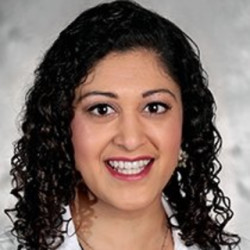You know the moment. It’s almost like being zapped by a stun gun. Someone says something that takes you so deeply by surprise that time stands still while you ask yourself, Did I just hear that correctly? Surely they couldn’t have said ... As you float back to reality, you take this nugget of information and make a rapid decision. Will this go in the “sure thing” pile or the “hell no” pile?
Mine went in the “hell no” pile.
I was a new grad NP and orienting in my first job out of school. I was working in a busy reproductive health clinic, rotating through several locations as I was getting up to speed. Each clinic had a slightly different vibe, and each clinician had a slightly different approach. The orientation included a long clinical on-ramp as well as dozens of videos about how we worked with patients; part clinical content and part soft skills and rapport building.
I’m not so sure they expected to train me on identifying my professional boundaries and sticking to them.
One day while standing at the bench and prepping a wet mount slide, one of the seasoned clinicians struck up a conversation. “How are you at doing bimanual exams?” I hadn’t seen that many patients yet where a bimanual was indicated. “Just do them on every table visit. It’s the only way to get used to what feels normal, what doesn’t, you know.” Our visits were pretty short (10 minutes) and I didn’t think I’d have time to explain and ask every patient. “Don’t bother with that. Just do it while you’re in there.”
I wonder about my facial expression in that moment.
This was well before COVID, so I was definitely not wearing a mask, surgical or social. I don’t know if I was more shocked at the content or the delivery of this advice. Either way, I didn’t like it, didn’t agree with it, and immediately decided I would never do that. It went on the “hell no” pile. If there was a reason, a clinical indication, of course I would do a bimanual exam. But I would never simply do a bimanual exam “while I was in there.” This was the patient’s visit and body, not my personal learning lab.
I finished my wet mount, took a look at the slide, and went back to my patients. I didn’t have any further discussion with that clinician, and I avoided future discussions, as well. If this was the advice I got without asking, I didn’t want to find out what else was waiting to be told.
While there is a part of me that can bristle readily, there is another part (which I like to think is larger) that sees learning opportunities just as readily. This was definitely a high yield learning opportunity, though I doubt it was in the way this clinician intended. This brief conversation over a couple of wet mount slides stuck with me; in one way or another, it has informed every single clinical encounter I have had since.
I will not say that this clinician meant well when giving this advice. Women and nurses are too conditioned to take that point of view, and I don’t want to perpetuate it. I think she was selfish, patronizing, and paternalistic in giving this unsolicited advice.
Likely intended to boost my clinical expertise, this brief exchange had the opposite effect for me. Because I found this advice so objectionable and dropped it so immediately into the “hell no” pile, it ended up providing much more value to me in terms of professional development. It helped me define who I am as a clinician, and how I approach the patient encounter. I learned how repulsive unsolicited advice can be, and how it can put an immediate barrier between you and your audience. I learned that I have clear boundaries as a clinician and the backbone to uphold them.
The decision regarding what I will put in the “sure thing” pile and which goes immediately to the “hell no” pile is mine exclusively. The responsibility to behave accordingly is mine alone. The best advice simply provides food for thought and can inform the way that you take care of your patients. Great advice can provide another tool that you have available when the need arises. Unsolicited advice, dispensed with an expectation to be swallowed whole and acted upon at the next opportunity — who does that serve? The advisor or the advisee?
Critical thinking is limitless. It is not situational; it’s not only for the classroom or the thesis paper. By the time we pass boards and earn our licenses, critical thinking should extend to all aspects of our professional life. These skills apply not just to the findings of peer reviewed articles we read in journals, but also to what we encounter in the workplace. Because something has always been done one way doesn’t mean it is the best way, and doesn’t mean it isn’t time for critical appraisal and an update.
What's some "hell no" advice you've received in your career? Share in the comments.
Jessica Reeves is a nurse practitioner as interested in the well-being of her fellow clinicians as that of her patients — and she's on a mission to make the work world a better place to live. She writes, works, and lives in the town that holds the world record for most lit jack-o-lanterns (really). Follow her at jessicareeves.net. Jessica was a 2023–2024 Doximity Op-Med Fellow and continues as a 2024-2025 Doximity Op-Med Fellow.
Image by GoodStudio / Shutterstock







